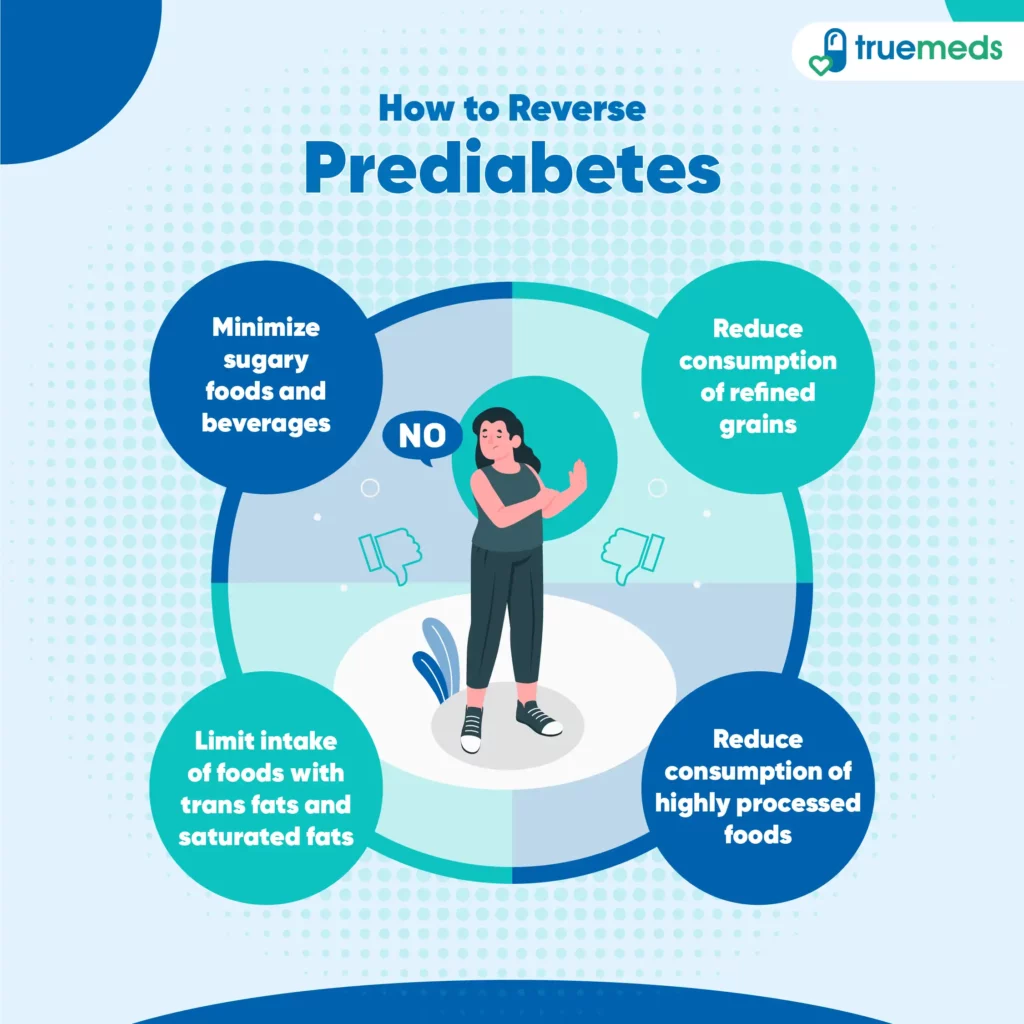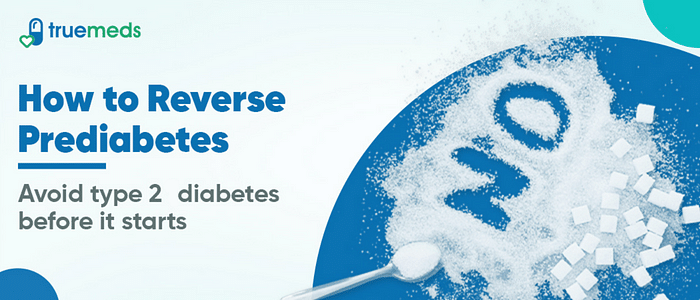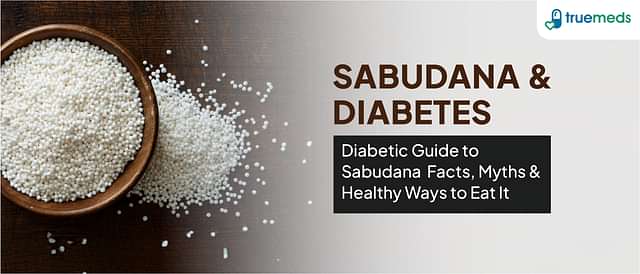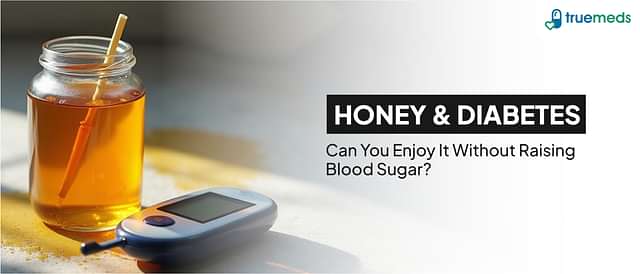How to Reverse Prediabetes and Avoid Type 2 Diabetes Before It Starts
Last updated on : 19 Mar, 2025
Read time : 12 min
What is the meaning of Prediabetes, and how can it be managed effectively?
Prediabetes refers to a state in which blood sugar levels exceed normal ranges but do not reach the threshold for type 2 diabetes classification. It serves as a warning that indicates a risk of developing diabetes in the future.
Prediabetes is an opportunity for individuals to make positive lifestyle changes, like adopting a healthy prediabetes diet and increasing physical activity, to prevent or delay the onset of type 2 diabetes. Understanding the meaning of prediabetes empowers individuals to take control of their health and make proactive choices to maintain optimal well-being.
The link between prediabetes and type 2 diabetes
Prediabetes and type 2 diabetes are linked with a common underlying issue: high blood sugar levels. Prediabetes is an early sign of type 2 diabetes, as individuals with prediabetes have blood sugar levels higher than usual but not yet in the diabetic range.
If left unaddressed, prediabetes can progress to type 2 diabetes. However, not everyone with prediabetes will develop diabetes. With the right lifestyle changes, such as adopting a healthy diet, physical activity, and healthy weight, it is possible to prevent the onset of type 2 diabetes.
Common symptoms of prediabetes
Here are some common symptoms of prediabetes:
- Increased thirst: You may feel excessively thirsty, as high blood sugar levels can cause dehydration.
- Frequent urination: An increase in urination frequency, particularly at night, can be a symptom of prediabetes.
- Fatigue: Feeling tired or lacking energy after sufficient rest can indicate prediabetes.
- Increased hunger: You may feel hungry more often, as your body may not effectively utilise glucose for energy.
- Unexplained weight loss: Despite increased hunger, you may experience unintentional weight loss due to the body’s inability to process and utilise glucose properly.
- Slow-healing wounds: Wounds or cuts may take longer to heal, as high blood sugar can affect the body’s healing processes.
Risk factors for developing prediabetes
Many factors can increase the odds of developing prediabetes. These risk factors can help identify individuals more prone to developing the condition. Here are some common risk factors for prediabetes:
- Overweight or obesity: Excess body weight, especially abdominal fat, increases the risk of insulin resistance, a critical factor in prediabetes.
- Sedentary lifestyle: The absence of physical activity and a sedentary lifestyle contribute to insulin resistance and can increase the risk of prediabetes.
- Family history: A close family member with type 2 diabetes can increase the likelihood of prediabetes.
- Age: The likelihood of prediabetes rises notably after reaching 45 years of age, possibly attributed to diminished physical activity and shifts in hormonal patterns.
- Gestational diabetes: Females who have experienced gestational diabetes during pregnancy have a heightened risk of developing prediabetes and type 2 diabetes.
- Unhealthy diet: Consuming diets high in processed foods, sugary beverages, and saturated fats and low in fruits, vegetables, and grains increase the risk of prediabetes.
Also read: Foods to Manage Diabetes
Lifestyle changes for reversing prediabetes
Reversing prediabetes and stopping its progression to type 2 diabetes involves essential lifestyle changes. Here are some essential lifestyle modifications that can help:
Balanced prediabetes diet with healthy eating habits
Prioritise a well-rounded diet for prediabetes, encompassing fruits, vegetables, grains, proteins, and nourishing fats, while minimising consumption of processed foods, sugary treats, and beverages.
Regular physical activity
Engage in consistent physical activity, with at least 150 minutes of moderate-intensity aerobic weekly exercise. It can include brisk walking, cycling, swimming, or any exercise that increases your heart rate.
Weight management
Maintain a proper weight through healthy eating and regular physical activity. Losing even a small amount of weight, such as 5-7% of your body weight, can significantly reduce developing type 2 diabetes.
Also read: Ayurvedic Diet For Weight Loss
Stress management techniques
Practice mindfulness meditation, deep breathing exercises, yoga, or engage in hobbies that help you relax. Chronic stress can contribute to insulin resistance and make it harder to manage prediabetes.
Getting adequate sleep
Aim for 7-8 hours of sleep each night. Poor sleep can affect insulin sensitivity and increase the risk of developing prediabetes or progressing to type 2 diabetes.
Also read: How Much Sleep Do You Really Need?
Avoiding tobacco and limiting alcohol consumption
Quit smoking if you smoke and avoid exposure to secondhand smoke. Limit alcohol consumption or avoid it altogether, as excessive alcohol intake can affect blood sugar control.
Foods to eat and avoid with prediabetes
Making a prediabetes diet plan is crucial for maintaining blood sugar levels and prevent the progression of type 2 diabetes. Here are some guidelines on foods to eat and avoid. Include this prediabetes diet chart in your diet.
Foods to eat
- Whole grains: Opt for whole grain choices such as whole wheat, brown rice, quinoa, and oats. These provide fibre and have a lower impact on blood sugar levels.
- Non-starchy vegetables: Include a variety of colourful vegetables such as leafy greens, broccoli, cauliflower, peppers, and carrots. They are low in calories and high in fibre, vitamins, and minerals.
- Lean proteins: Select lean protein sources like skinless poultry, fish, tofu, legumes, and low-fat dairy products. It provides essential nutrients without significantly affecting blood sugar levels.
- Healthy fats: Include nourishing fats from options such as avocados, nuts, seeds, and olive oil. These fats can improve insulin sensitivity and provide essential nutrients.
- High-fibre foods: Include fibre-rich foods like fruits (especially berries), vegetables, legumes, and whole grains. Fibre helps slow down digestion and regulate blood sugar levels.
Foods to avoid

- Sugary foods and beverages: Minimise or avoid sugary drinks, candies, desserts, and processed snacks, as they can cause a increase in blood sugar level.
- Refined grains: Reduce consumption of refined grains like white bread, white rice, and processed cereals, as they are quickly broken down into sugar.
- Trans fats and saturated fats: Limit intake of foods with trans fats and saturated fats, such as fried foods, fatty cuts of meat, full-fat dairy products, and processed snacks.
- Highly processed foods: Reduce consumption of heavily processed foods, which contain added sugars, unhealthy fats, and refined grains.
Monitoring blood sugar levels
Regular monitoring of blood sugar level helps individuals understand how their bodies respond to different factors and allows for early detection of any changes. Here are the critical aspects of monitoring blood sugar levels.
Importance of regular monitoring
Monitoring helps individuals become more aware of how food, physical activity, and other lifestyle factors affect their blood sugar levels. Regular monitoring helps detect fluctuations or patterns in blood sugar levels, enabling early intervention and preventing further complications. To understand how key hormones regulate blood sugar, check out our article on insulin and glucagon function.
How to monitor blood sugar levels
Individuals can measure their blood sugar levels using a blood glucose meter by pricking their fingers applying a tiny blood drop to a test strip. The meter then provides an instant reading.
Continuous glucose monitoring devices measure blood sugar levels continuously throughout the day using a sensor inserted under the skin. The device sends real-time glucose readings to a receiver or smartphone.
Target blood sugar ranges
Typically, the target range for fasting blood sugar levels is between 80 and 130 mg/dL (4.4 to 7.2 mmol/L). This refers to blood sugar levels after an 8-hour fasting period.
Blood sugar levels, measured about two hours after a meal, should generally be less than 180 mg/dL (10 mmol/L).
Read Also: Normal Blood Sugar Levels Chart
What is the time frame to reverse prediabetes?
The time frame to reverse prediabetes varies from person to person depends on several factors, including individual commitment and lifestyle changes. Early detection and proactive intervention can reverse prediabetes within a few months to a year.
Embracing a healthy lifestyle, with regular physical activity, a balanced prediabetes diet, weight management, and stress reduction, is crucial in reversing prediabetes. Close blood sugar monitoring and regular check-ups with healthcare professionals are essential to track progress and make adjustments to achieve optimal results.
Conclusion
Knowing the prediabetes meaning is crucial for early intervention and prevention of type 2 diabetes. Reversing prediabetes and preventing type 2 diabetes requires proactive steps and lifestyle changes.
Understanding the significance of prediabetes empowers individuals to proactively enhance their well-being and diminish the likelihood of future diabetes. Consistently monitoring blood sugar levels and collaborating closely with healthcare experts are vital for monitoring advancement and implementing essential modifications.
You can download our user-friendly Truemeds app for easy access to medicine at low rates. Submit your prescription to our platform to receive branded and generic medications. Enjoy savings on purchases and the added convenience of free home delivery on relevant orders across India*.
Frequently asked questions
The time frame can vary, but prediabetes typically takes several years to progress to type 2 diabetes.
Yes, with lifestyle changes and proper management, prediabetes can often be reversed, reducing the risk of developing type 2 diabetes.
Individuals who are overweight, have a family history of diabetes, are physically inactive, or have a history of gestational diabetes are at a higher risk for prediabetes.
Prediabetes is diagnosed through blood tests that measure fasting blood glucose levels or perform an oral glucose tolerance test.
A doctor can determine if you are prediabetic by evaluating your risk factors, performing a blood test, and interpreting the results.
Reversing prediabetes requires lifestyle changes such as adopting a balanced prediabetes diet, regular physical activity, managing weight, reducing stress, getting adequate sleep, and avoiding tobacco and excessive alcohol consumption. It may take longer than three months to achieve significant results.
Although type 2 diabetes cannot be entirely eradicated, it can be adeptly controlled via lifestyle adjustments, medications, and consistent blood sugar level monitoring.
Prediabetes can frequently be reversed through lifestyle modifications, but maintaining these changes is crucial to stop the advancement towards type 2 diabetes.
A borderline sugar level refers to blood glucose higher than usual but not high enough to be classified as diabetes. It typically falls within the prediabetes range.
Regular physical activity, including walking, can help improve insulin sensitivity and aid in reversing prediabetes.
An HbA1c level in between 5.7% and 6.4% is a sign of prediabetes.
Prediabetics can include rice, but portion control and choosing whole-grain options are essential to managing blood sugar levels.
Insufficient and poor-quality sleep over an extended period has been associated with a higher likelihood of developing type 2 diabetes.
Prediabetes can affect various organs in the body, including the pancreas, liver, kidneys, heart, and blood vessels.
Increased hunger can be a symptom of prediabetes, but it may vary among individuals. Some people with prediabetes may experience frequent hunger, while others may not.
Food for prediabetes to avoid is high in refined carbohydrates, added sugars, unhealthy fats, and processed foods. Focusing on a balanced pre diabetic diet with fruits, vegetables, grains, proteins, and healthy fats is essential.
Not everyone with prediabetes will progress to diabetes. With lifestyle changes and proper management, prediabetes can often be reversed, reducing the risk of developing type 2 diabetes.
Disclaimer
The content provided within this article has been thoroughly verified for accuracy. However, we advise consulting a healthcare professional before utilising any medication or dietary supplements mentioned herein.
References
- Alvarez S, Coffey R, Algotar AM. Prediabetes. [Cited on 2023 July 18]. Available from: https://www.ncbi.nlm.nih.gov/books/NBK459332/
- Tuso P. Prediabetes and lifestyle modification: time to prevent a preventable disease. The Permanente Journal. 2014;18(3):88. [Cited on 2023 July 18]. Available from: https://www.ncbi.nlm.nih.gov/pmc/articles/PMC4116271/
- Zand A, Ibrahim K, Patham B. Prediabetes: why should we care?. Methodist DeBakey cardiovascular journal. 2018 Oct;14(4):289. [Cited on 2023 July 18]. Available from: https://www.ncbi.nlm.nih.gov/pmc/articles/PMC6369626/
- Tabák AG, Herder C, Rathmann W, Brunner EJ, Kivimäki M. Prediabetes: a high-risk state for developing diabetes. Lancet. 2012 Jun 6;379(9833):2279. [Cited on 2023 July 18]. Available from: https://www.ncbi.nlm.nih.gov/pmc/articles/PMC3891203/
- Khan RM, Chua ZJ, Tan JC, Yang Y, Liao Z, Zhao Y. From pre-diabetes to diabetes: diagnosis, treatments and translational research. Medicina. 2019 Aug 29;55(9):546. [Cited on 2023 July 18]. Available from: https://www.ncbi.nlm.nih.gov/pmc/articles/PMC6780236/
Disclaimer
Our healthcare experts have carefully reviewed and compiled the information presented here to ensure accuracy and trustworthiness. It is important to note that this information serves as a general overview of the topic and is for informational purposes only. It is not intended to diagnose, prevent, or cure any health problem. This page does not establish a doctor-patient relationship, nor does it replace the advice or consultation of a registered medical practitioner. We recommend seeking guidance from your registered medical practitioner for any questions or concerns regarding your medical condition.
Popular Articles
Recommended Articles
Recent Articles
Top-Selling Medicines:
...View more
Top-Selling OTC:
...View more
Subscribe
Registered Office Address
Grievance Officer
Download Truemeds

Contact Us
Our customer representative team is available 7 days a week from 9 am - 9 pm.
v3.7.5
Our Payment Partners

























































